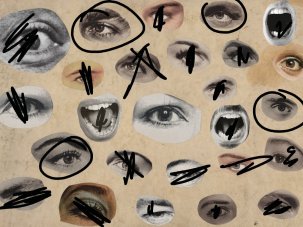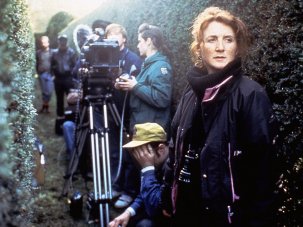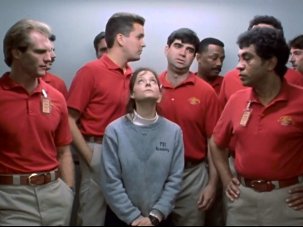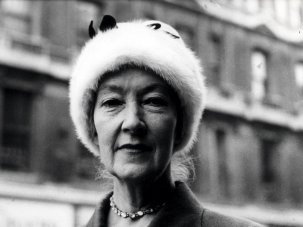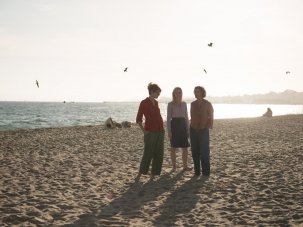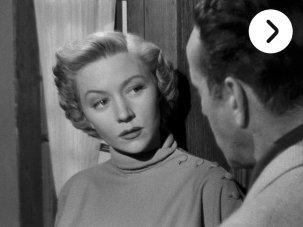Web exclusive
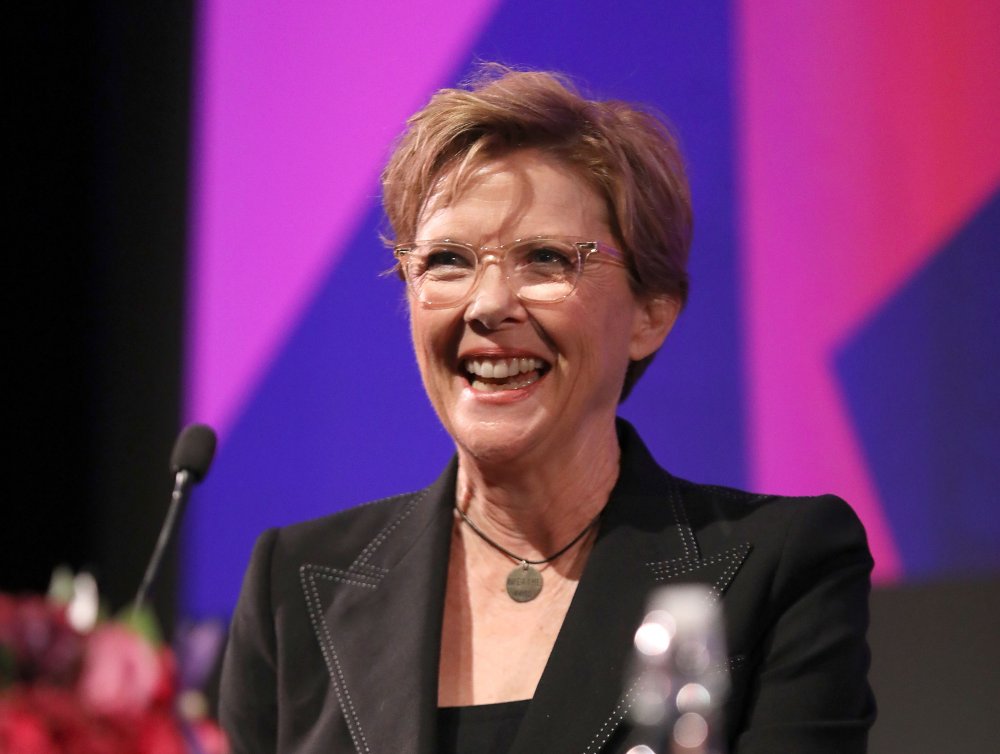
Annette Bening during her 2017 London Film Festival Screen Talk
Credit: Tim P. Whitby, Getty Images
Two days after the publication of an article by Ronan Farrow in the New Yorker which combined the accounts of 13 women harassed or sexually assaulted by Harvey Weinstein; a week after Jodi Kantor and Megan Twohey broke the story in the New York Times, revealing that the studio boss had reached “at least eight settlements with women”, Annette Bening gave a live interview at this year’s London Film Festival.
During the interview, hosted by Gaylene Gould, Bening spoke of the individuals who inspired her to take up acting; of her training in the theatre; of the “plodding” progress of her career; of the opportunities (and happenstances) that we afterward call a ‘transition’ into screen acting; of feeling, at first, out of place in film (“it took me a while to not feel like a stage actor doing movies”); of learning from her eminent co-stars Meryl Streep and Robert De Niro; and of the chaos and unevenness of the screen acting experience.
Annette Bening gave a on 12 October 2017 at the BFI Southbank.
Film Stars Don’t Die in Liverpool is now on UK release.
In a Lonely Place and The Big Heat are re-released in UK cinemas on 24 November, and Good at Being Bad: the films of Gloria Grahame runs 13 November–30 December at BFI Southbank, London.
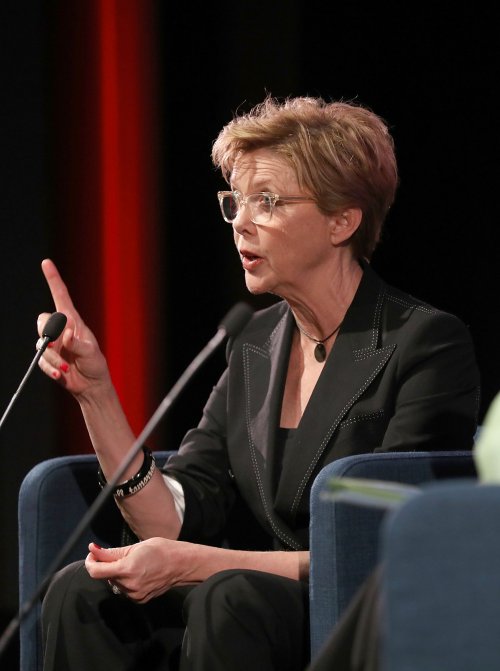
Credit: Tim P. Whitby, Getty Images
Bening is an intelligent woman, and an engaging storyteller. She is funny. Her reminiscences and impersonations were entertaining, and her thoughts about the actor’s responsibility (“we’re interpreters”) insightful. Her reflections on her ‘process’ – “the conscious way to the unconscious” – and the “fear” she feels before performing, unabated after all these years, were as heartening for the aspiring actor as they were absorbing for the rest of us.
But what most stood out about Bening’s Screen Talk was the fact of her talking at all. Bening speaking about herself and her career for almost a full hour and the audience listening to her with interest was, in the context of the blowing open of the Weinstein Company can of worms, arresting. In the wake of the disclosures of actresses and employees misused by Weinstein and prevented from speaking about his transgressions for as long as decades; in light of the pattern lately made visible of careers coming to grief when actresses refused Weinstein’s advances, it struck me how unusual it is that an actress be given the chance to speak directly to the moviegoer. Alone, not flanked by her director or writer or any co-star, Bening addressed the audience of 450 or so fans directly. Except for Gould’s provision of four film clips, illustrative, she felt, of the phases of womanhood Bening had portrayed over the years, the actress managed the conversation; gave of herself as much or as little as she wished. This interface between actress and moviegoer, unbroken by any proxy – publicist on behalf of the actress, journalist on behalf of the public – was significant, because rare, and its uncommonness not unrelated to Weinstein’s misconduct. It may never be more important than it feels now for the actress to have this kind of access to the film-going public; never more important, though it has always been important, that we hear from Hollywood actresses directly.
That certain readers of the New Yorker and the New York Times articles were taken aback not only by the allegations they enclosed, but by the commonplace operations of the acting and casting business (namely, that business meetings are held in hotel suites) is telling and still unsurprising. How should they know? The typical filmgoer is no more aware of how a successful actress auditions (or doesn’t) or comes by a part than they are of the sexual violence that thrives in this industry. This is, in part, because actresses are seldom welcomed to share with the filmgoer the mechanisms, the transactions and myriad relationships, of her profession and her opinions thereon. This isn’t possible within the compass of the press junket interview. It isn’t generally realisable in print.
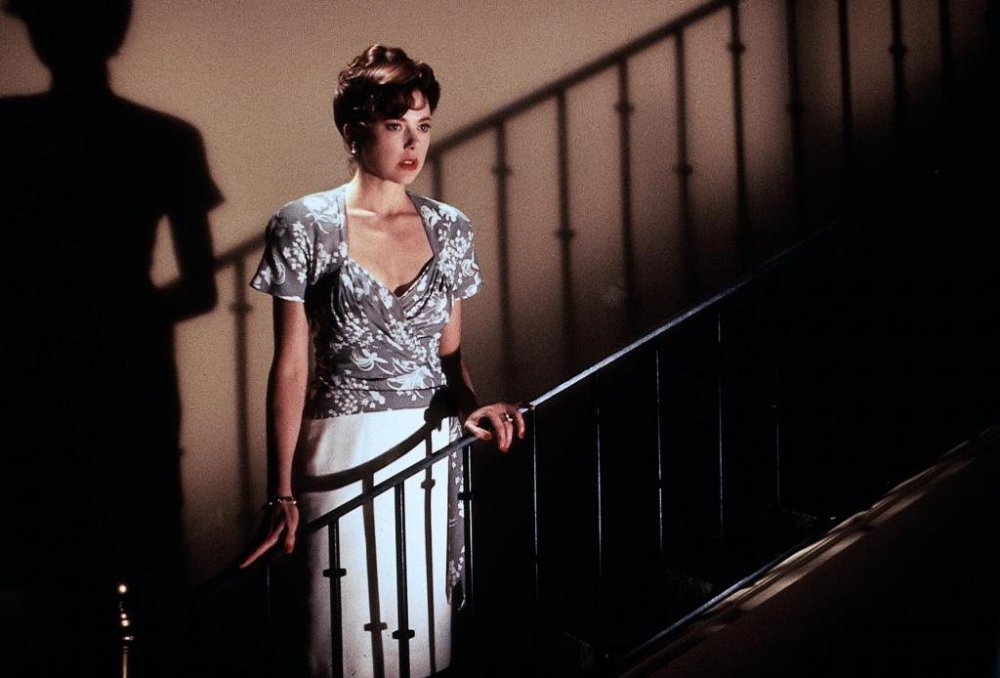
Bening as Virginia Hill in Bugsy (1991)
In an article published in the New York Times two days after Bening’s talk, Canadian director Sarah Polley disclosed her own encounter with Weinstein, and described what it was like to work as a young actress in Hollywood. Polley’s op-ed reminded the reader that it isn’t only in hotel rooms that actresses are brought low, their self-esteem eroded: rather, this is “an industry that makes its disdain for women evident everywhere [they] turn”. From the “exploit[ing]… and chastis[ing]” of actresses on set to the promotional “photo shoots in which [the actress is] treated like a model with no other function than to sell [her] sexuality”, a woman’s experience of making a film is, in Polley’s appraisal, “humiliation” from beginning to end. The article concluded with her looking forward to a time when “the ways in which women are degraded, both obvious and subtle”, are behind us.
Among the ‘subtler’ abuses to which Sarah Polley alludes we might include the abuses of the press – the subtle and unsubtle abuses of language and licence. Consider the print interview: where the live or televised interview empowers an actress, as Bening was empowered at the BFI event, the print interview frequently achieves the opposite. In conversation with Gould, Bening twice stated that cinema was “the director’s medium”. Familiar with the figures, the ratio of male to female directors currently working in Britain and Hollywood, I both times heard ‘a man’s medium’.
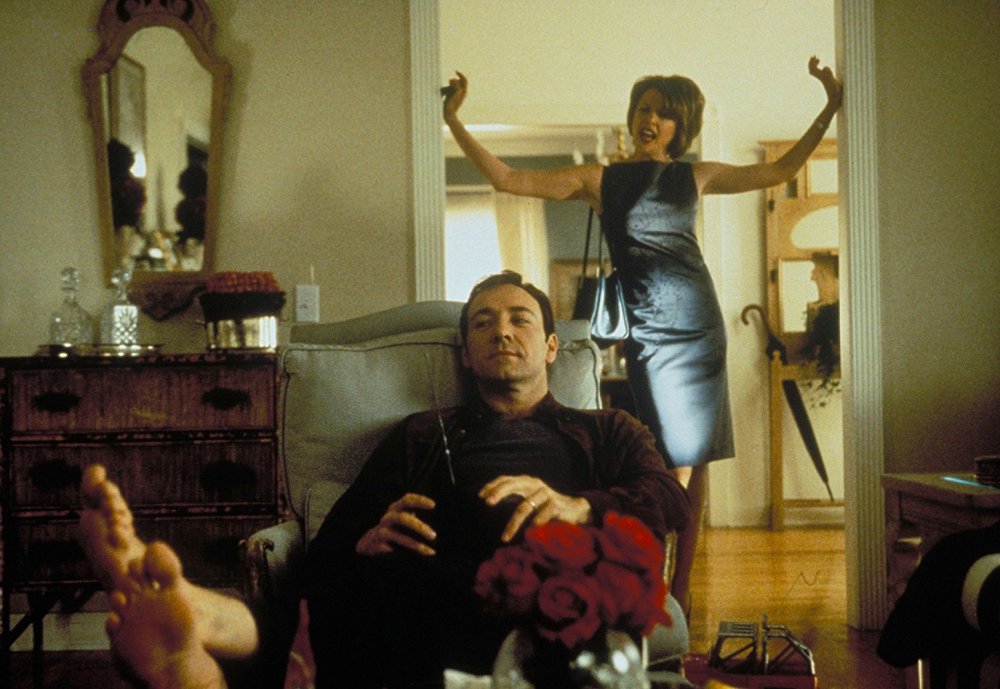
Bening as Carolyn Burnham behind Kevin Spacey as her husband Lester in American Beauty (1999)
As we know, film journalism is also a man’s medium. When an actress speaks with a film journalist, she turns their conversation over to him. Whatever the format – profile, write-through or question-and-answer with introduction – the interviewer, typing up their exchange, has the final word. He has the power to prime the reader, to condition their interpretation of an actress’s words, and to frame her as other than she is. No less effectively than any photo shoot, there is the potential with the print interview to diminish or objectify an actress, compounding the status quo: the “little respect” afforded actresses to which Polley, Rose McGowan and Mira Sorvino, to name a few, have testified in recent weeks. If it is true that a new era of caring for the welfare of actresses has dawned with the fall of Weinstein’s empire, ought we not review the expectation that actresses confide in individuals they do not know from Adam?
Bening has suffered the infractions of the print interview before now. Speaking with a representative of Interview magazine in 1994, a sedulous Bening, then 36, enthused about her work: “What’s difficult is finding time just to do the kind of work I need to do in order to act… I need to find a place of solitude and time to be alone and daydream in order to feel good when I am working. I find now I almost have to fight for it.” Asked, in this same interview, how she handled “public scrutiny”, she replied: “It’s really no different to anybody else – it just so happens that I am an actor, and a lot of people want to ask us questions that none of us would want to answer for any stranger.” That she also stresses the necessity of stepping outside herself that she may better inhabit a character (“you yourself are just constantly trying to get out of the way… to let this person come through”) does not deter her interviewer from confusing Bening with certain of her characters – in particular, the sexually frank Myra Langtry from The Grifters.
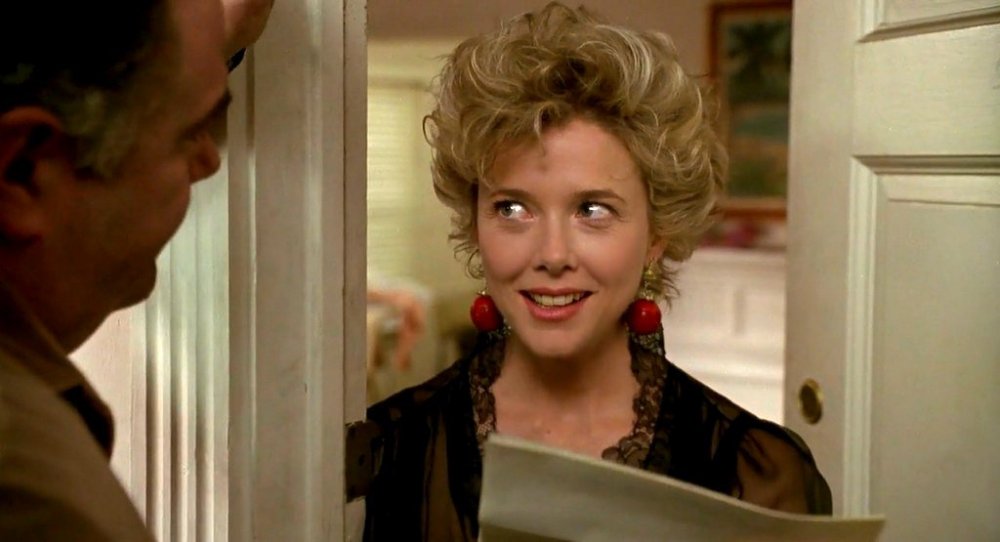
Bening as Myra Langtry in The Grifters (1990)
No matter that Bening’s remarks make clear that acting entails becoming other than herself (“a frustration because you are here and you do have the constant chatter of your intellect… but what you really want to do is… let those aspects of yourself become quiet”), her interviewer, in his introduction, labels her a “great pretender”. In place of the proper terms for Bening’s profession (acting, performance), he reaches first for “chronic mendacity”, “lying” and “scheming”. Deception, he implies, is Bening’s métier. More than this, she loves to deceive; loves it better than any actress he can name: “no [other] seems to savour the sweetness in lying that Annette does when she’s in character”. Bening “glows with the fecundity of her scheming”. That is, her cunning puts colour in her cheeks; she is pregnant with it.
In a further analogy, the interviewer pastes her face on to the body of a Vargas girl. She “cannot restrain” her “smirk”, turning on him “that split pomegranate grin. (Or is it better likened to a mantrap?)” Within a few short paragraphs, the writer has recast the business of acting as promiscuity. So it is that, before even we come to read Bening’s words, the interviewer’s language has made her into a body without intellect. Actresses are not pin-ups, nor models either. However she makes her living, no woman should be subjected to this versioning of herself, as vivid as any photograph and as apt to feed the imagination of a readership.
Writers delight in making connections. Bening’s interviewer was no exception, drawing a connection between the actress and the fictional creation of Langtry – not even her most recent part at the time of their speaking, as she “firmly” reminds him: “after I did The Grifters, I did Guilty by Suspicion and then Regarding Henry, so for the last year I have been, like, a wife and a mother, playing roles that did not emphasise the sexuality or physical appearance at all”. Bening was nowhere close to convincing this interviewer that acting is, as Polley upholds in her article, “a beautiful job”, one “built on empathy and human connection”. The readiness to conflate an actress with the women she brings to life is no new phenomenon. That actresses are ready for it does not make it any less imprisoning.
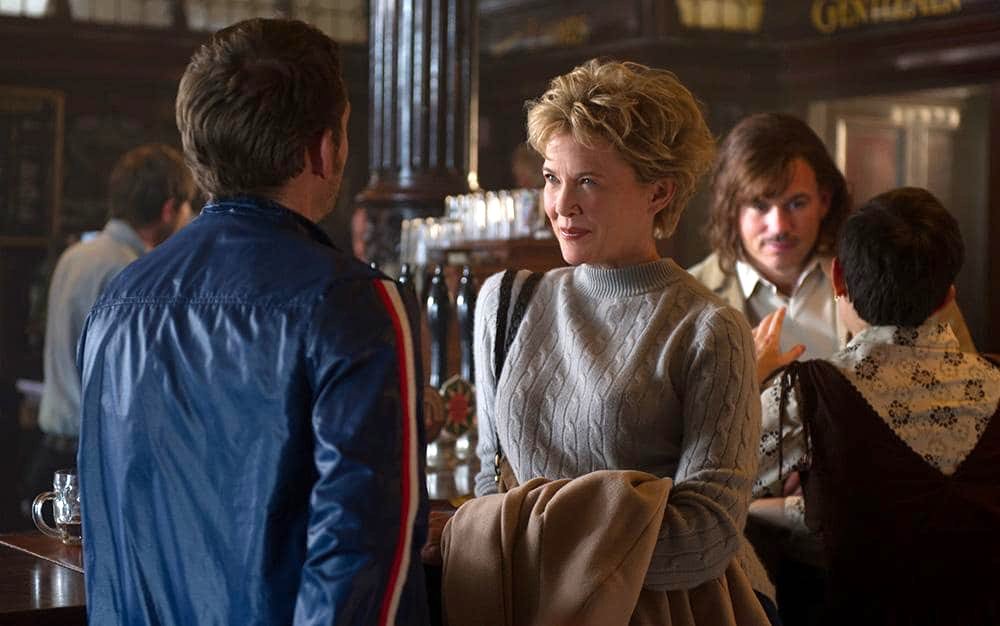
Bening as Gloria Grahame in Film Stars Don’t Die in Liverpool (2017)
Gould’s fourth clip was taken from Bening’s latest movie Film Stars Don’t Die in Liverpool, adapted from Peter Turner’s memoir about his love affair with Gloria Grahame, star of The Bad and the Beautiful (1952) and In a Lonely Place (1950). When the offers of work tapered off in America, Grahame welcomed invitations to perform on the English stage. It was during that time she met Turner, an actor 30 years her junior. Their affair lasted from 1979 until Grahame’s death, at 57, in 1981.
Gould followed this last clip by asking Bening what drew her to the role (“What was it about Gloria Grahame, do you think, for you?”), imagining, perhaps, that Bening would profess to identifying with the ageing actress. Bening didn’t bite: “People have to see the movie and see what resonates with them.” Given her experience of interviewers’ lines of enquiry, it is easy to see why Bening warmly deflected Gould’s suggestion that she and Grahame might have something in common: it is in her long-term interest to maintain that there are no special cases and to cast aside the notion of ‘seeing herself’ in a part. An actress is wise to resist the partialities that interviewers want to draw from her. Once she opens the door to these kinds of extrapolations – the collapsing of the real into the role – there is no closing it again, against more hostile intimations than Gould’s.
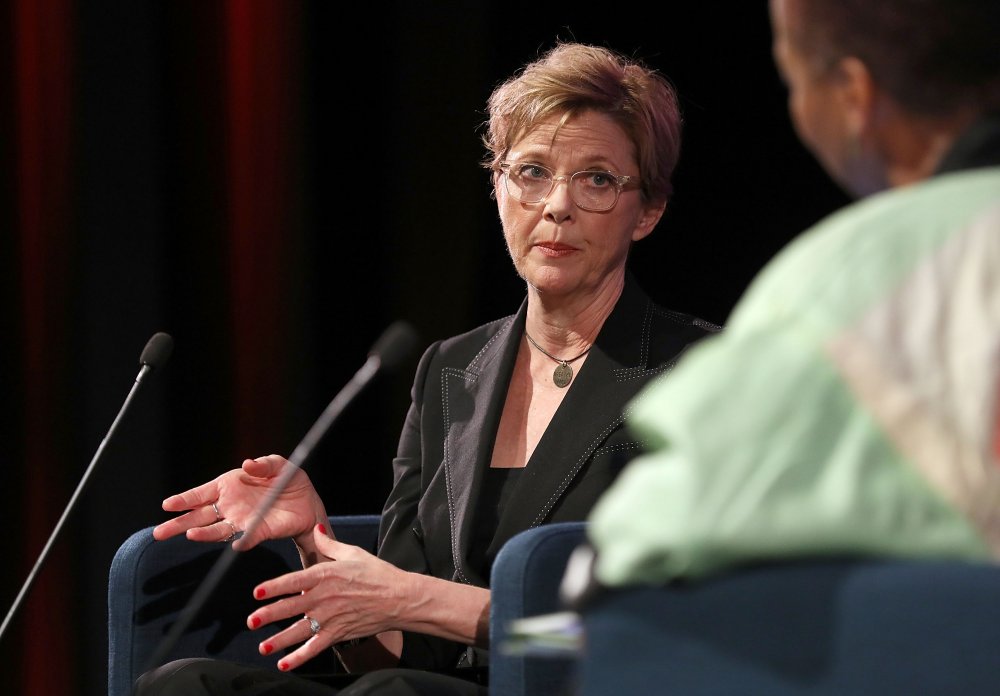
Annette Bening talking to Gaylene Gould at the 2017 BFI London Film Festival
Credit: Tim P. Whitby, Getty Images
Bening expanded her answer to Gould’s question, stating that her attraction to the Grahame role was threefold. She admired Turner’s tender representation of his lover, and she was impressed by the character’s complexity. She was “heroic… tough… a survivor… fierce,” but “she had her flaws, she was a normal human being.”
What most appealed to Bening, however, was the irresolvable nature of the story, capturing the “mystery” of that one love affair that eludes and never leaves us. When characters are so routinely and, by various means, pigeonholed – boxed in by a script, or mangled in the gears of subjective reception – there can be nothing more alluring for an actress than a story that throws into confusion that instinct of filmgoer and critics to codify and bring under control the female character. The dream part is the closed book.
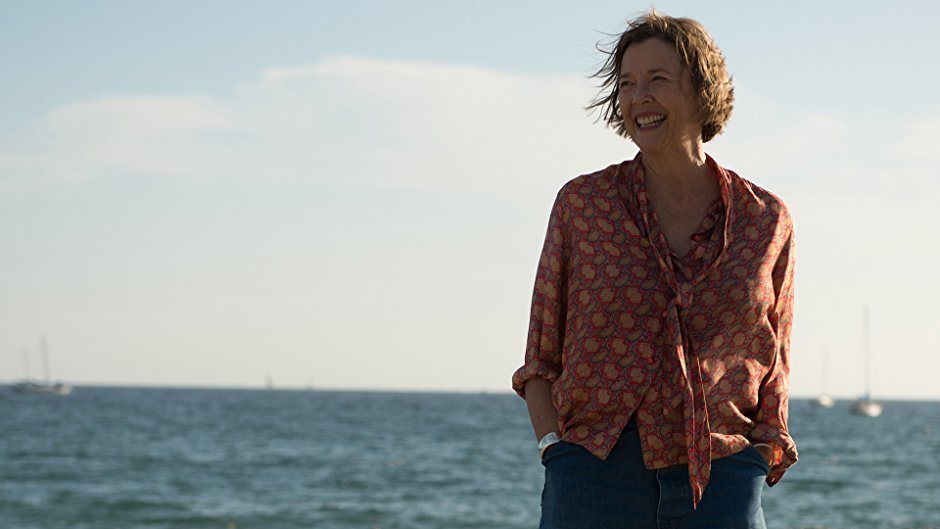
Bening as Dorothea Fields in 20th Century Women (2016)
Mike Mills’s film 20th Century Women was not one of the films discussed by Bening and Gould. In it, Bening plays a woman not much older in years than herself, albeit one who grew up during the Depression. A single mother, Dorothea gave birth to Jamie at 40. At 55, her relationship with her son discomfits her; she has no feel for his world of half-pipes and punk music. She levels with his friends that she is inadequate to the task of raising Jamie a good man and a man of his time, and solicits their help. Bening’s Dorothea is tall-necked, and wears no makeup on her eyes. She squints, as if at the glinting of “this modern world” of 1979. There’s an old-world clarity to the way that she moves; in the manner in which she smokes, and hooks her short hair behind her ears.
It is hard not to feel that Dorothea is the acme of Bening’s career: the perfect part, an answered prayer. Certainly, Film Stars’s Gloria is a gift of a role: it is rare to see a female character in her mid- to late-fifties enjoying a profoundly pleasurable sex life. Dorothea has no love scenes. Still, Mills’s film makes use of Bening’s body. He is interested in how his characters’ sense of being and of presence is refracted through their bodies; how the mind is easier adjusted to the present than the body. The body fixes us in our time, in our prime in the past. Dorothea tries to press hers into conformity with the now, as when she and the lodger dance to Jamie’s Talking Heads records.
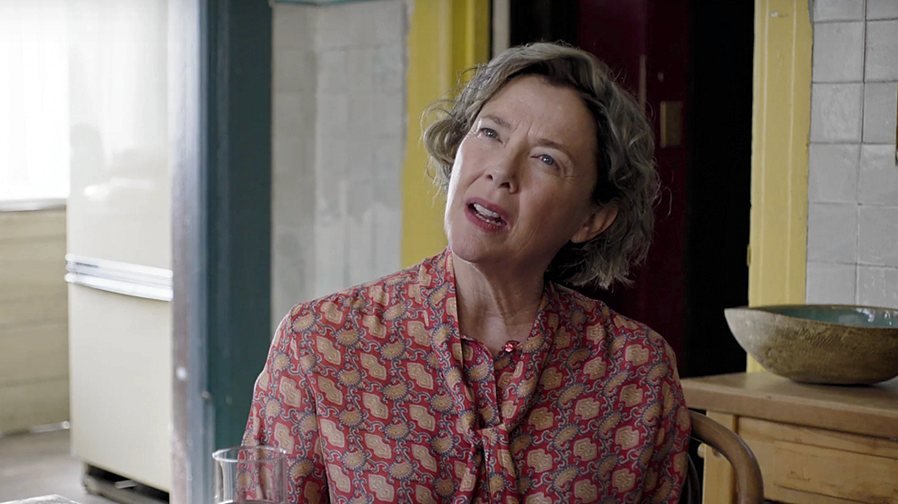
20th Century Women (2016)
Bening has said that Dorothea is “full of contradictions”. No sooner do we begin to pity her (her separateness) than she is brusque or thoughtless, and our pity is withdrawn. When Jamie reads to her from an essay about an older woman’s experience, she is cold: “I don’t need a book to know about myself”. She misses the point, of course: it’s Jamie who needs the book, and he who wants to know. The character of Dorothea resists understanding within and without the film; she perplexes her family and friends, and the viewer. When Julie, a friend of Jamie’s, tenders analysis of Dorothea’s character, the older woman rejoins: “You know that you’re not actually a therapist?”
But what makes this role so desirable, so superior, is that Dorothea and the film are one: the film is her character, and her character the film. This is the right stuff; what the actress covets: not resemblance between herself and the character she plays, but for there to be an accord between her character and the film; for these to be fused. 20th Century Women is about the desire to know those closest to us; know them completely, the better to love them and be loved. It concludes that we cannot know others, not nearly completely, and motions us towards an appreciation of the value – the divinity, even – of that impossibility. The film’s closing image is of an airborne Dorothea, laughing behind the windshield of a biplane: goggled, smiling, separate, inexplicably this person that she is.
In the December 2017 issue of Sight & Sound
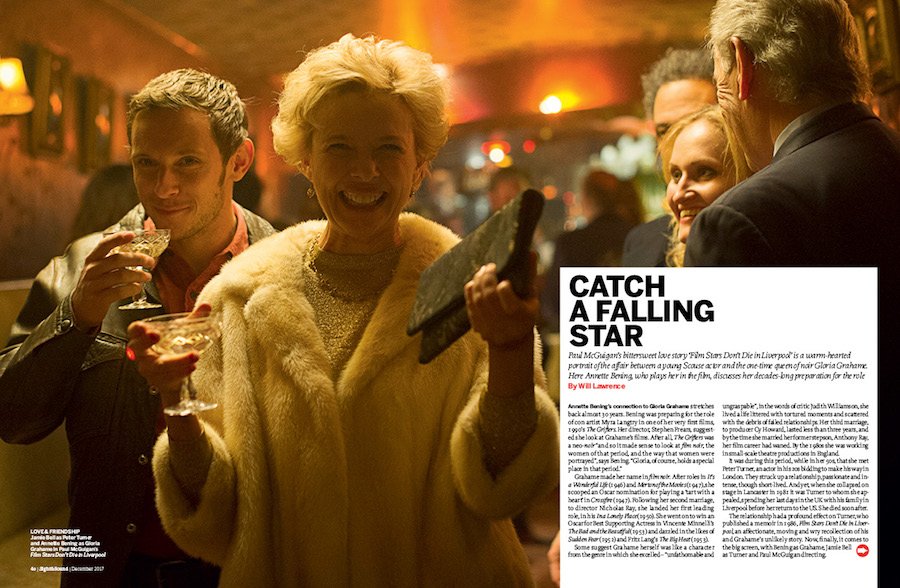
Catch a falling star
Paul McGuigan’s bittersweet love story Film Stars Don’t Die in Liverpool is a warm-hearted portrait of the affair between a young Scouse actor and the one-time queen of noir Gloria Grahame. Here Annette Bening, who plays her in the film, discusses her decades-long preparation for the role. By Will Lawrence.
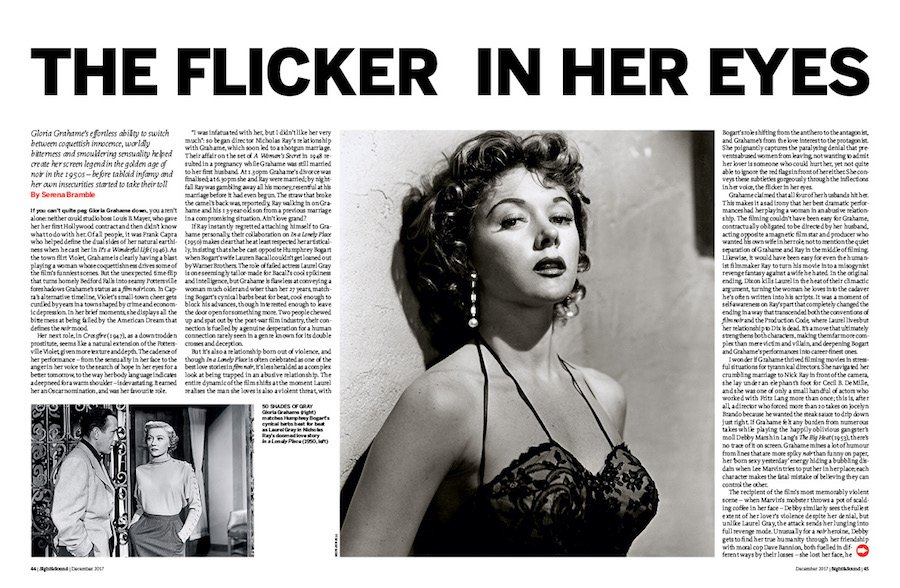
+ The flicker in her eyes
Gloria Grahame’s effortless ability to switch between coquettish innocence, worldly bitterness and smouldering sensuality helped create her screen legend in the golden age of noir in the 1950s – before tabloid infamy and her own insecurities started to take their toll. By Serena Bramble.
-
BFI London Film Festival 2017 – all our coverage

Follow all our coverage of the 61st London Film Festival, including reviews of the top films, interviews with their makers and blog posts from our...
-
Women on Film – all our coverage
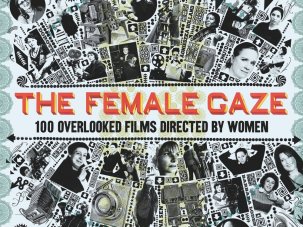
A window on our ongoing coverage of women’s cinema, from movies by or about women to reports and comment on the underrepresentation of women...
-
Sight & Sound: the December 2017 issue
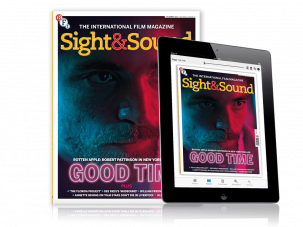
Robert Pattinson in in the Safdie brothers’ Good Time; plus The Florida Project; Mudbound; Gloria Grahame, Annette Bening and Film Stars Don’t Die...
-
The Digital Edition and Archive quick link
Log in here to your digital edition and archive subscription, take a look at the packages on offer and buy a subscription.




